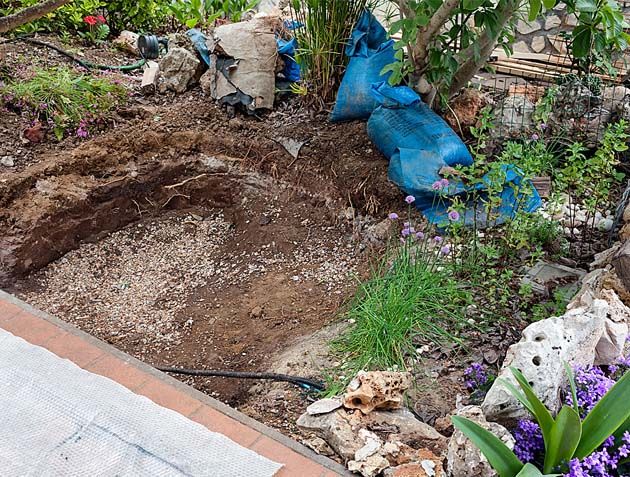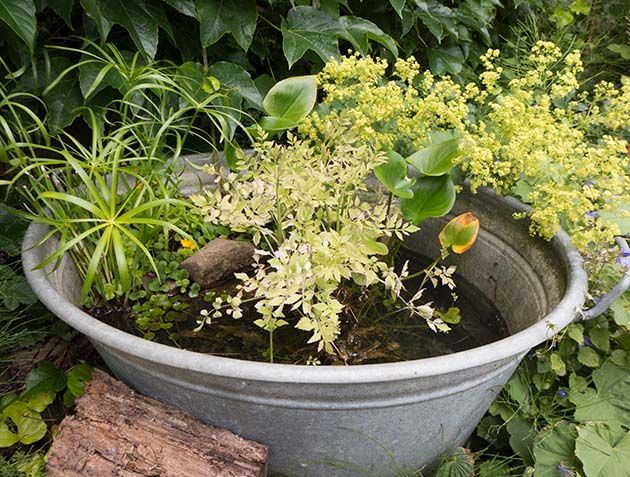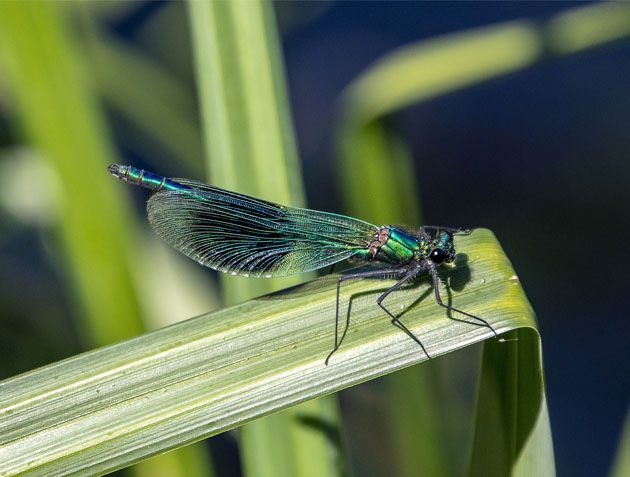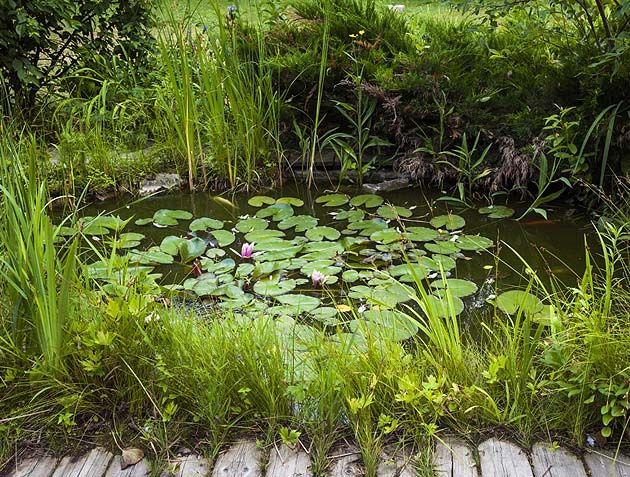Make a wildlife pond
Why create and improve ponds?
Ponds are incredibly valuable for wildlife as areas to feed, breed, and provide drinking water. Ponds can support a diverse array of plants and animals, but many freshwater habitats in the countryside have been lost to make space for more farming and housing.
Creating a pond in your Naturespace is a great way to attract and support wildlife:
- Frogs and toads both feed and breed in these areas
- Hedgehogs and other wildlife use ponds for drinking water
- Dragonflies and water beetles breed in ponds
- Birds, such as swallows and house martins, feed off the wildlife around the water
Ponds do not need to be big to attract wildlife and can be as small as even a container sunk into the ground. When filled with water and native aquatic plants, it will soon become a wildlife haven.
It is thought that we may have lost over half a million ponds in the last century.
What can you do to help?
You can either create a pond in your Naturespace, or maintain an existing pond if you have one already. If your space is limited, it’s easy to install a mini pond instead, using a container of water. Check out our guides below for step-by-step instructions.
Our Step-by-step guides
Simple steps to creating your pond
These general instructions are suitable for making a pond in an existing area of lawn or soft ground, but don’t be afraid to adapt these to your own circumstances. Please just make sure you have permission from the landowner.
Equipment needed:
-
Source of rainwater (such as water butt)
-
Aquatic plants
-
Pond liner (including protective underlay)
-
Sand or washed gravel
-
Spade
-
Spirit level
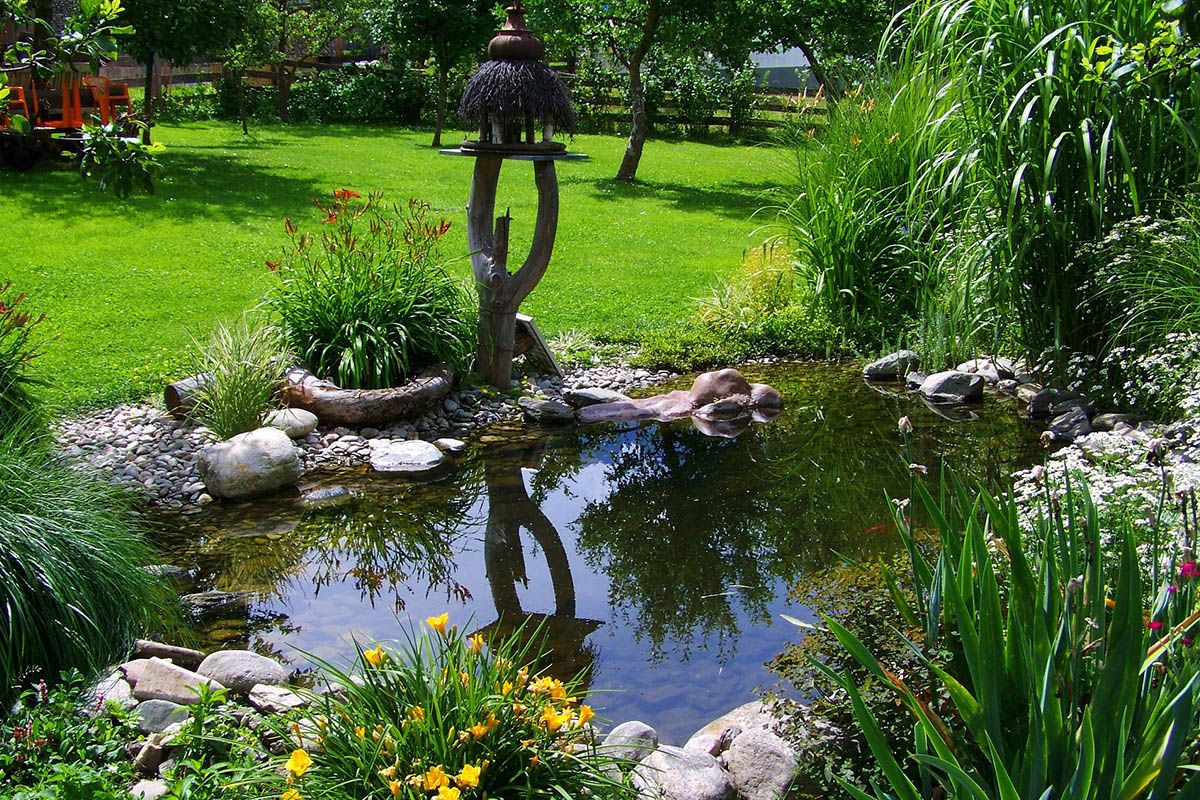
Step 1: Location
Consider the location of your pond carefully, as this is important for successfully attracting wildlife. Ideally this should be a tree-free and sunny area of your Naturespace, as this will limit the amount of leaf fall into the pond in autumn.
Ponds larger than 2m x 2m provide an attractive breeding site for wildlife, but if you don’t have the space for this, smaller ponds can still be a haven for frogs and other species.
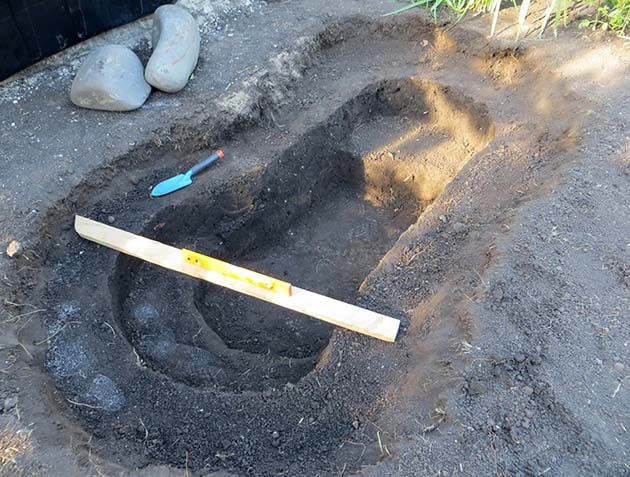
Step 2: Get digging!
Once you have chosen your site, you’ll need to mark out the area. The shape of wildlife ponds doesn’t really matter, so it is up to you! For a more natural-looking pond, try a wiggly shape.
Ponds with a range of depths are best for wildlife, so add ledges and aim for around half of the pond to be shallow (less than 25cm deep). Plus, include a deeper zone to allow an ice-free area for frogs to safely lie dormant on the bottom of the pond in winter.
At least one edge of the pond should be gently sloping so that animals (such as hedgehogs) can visit for a drink, but can climb out if they fall in. Ledges in ponds also allow frogs and toads to lay their spawn.
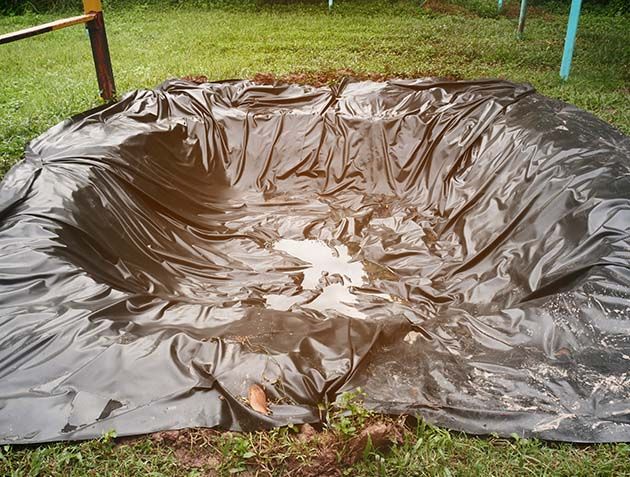
Step 3: Laying the liner
Carefully move back the surrounding grass turves, so that you can later put them back down later to secure the liner around the edge. Remove any stones from the pond area that may puncture your liner, then cushion it further with sand and a layer of underlay before putting the liner down.
You can also put a layer of underlay over the top to further protect it and provide a better surface for aquatic plants and mosses.
It’s important to get the pond level, otherwise all the water will drain to one side and you will have bare liner showing on the opposite side. You’ll need to use a spirit level on a long piece of wood that will go right across the pond.
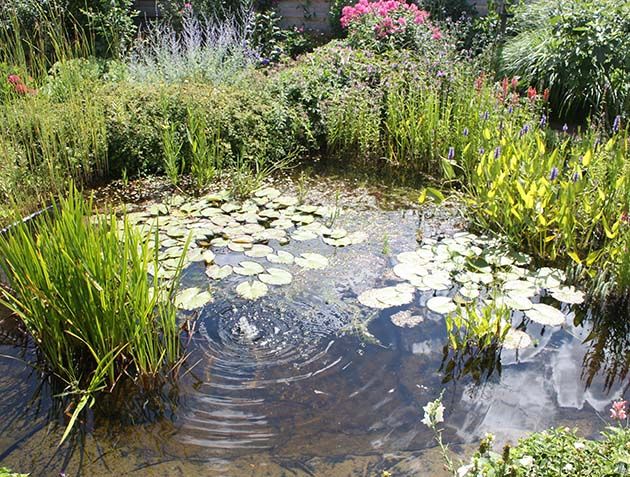
Step 4: Just add water
Tap water contains a large amount of nutrients that can be harmful for wildlife and result in algae, so it is better to use rainwater to fill up your pond, through direct rain or a water butt.
Once the water is in, you can trim back any excess liner and finally cover the edges with rocks and the grass turves you removed earlier - just make sure the soil can’t get washed back into the pond.
The grasses will soon grow down to the water, covering the edges to give a more ‘natural’ finish.
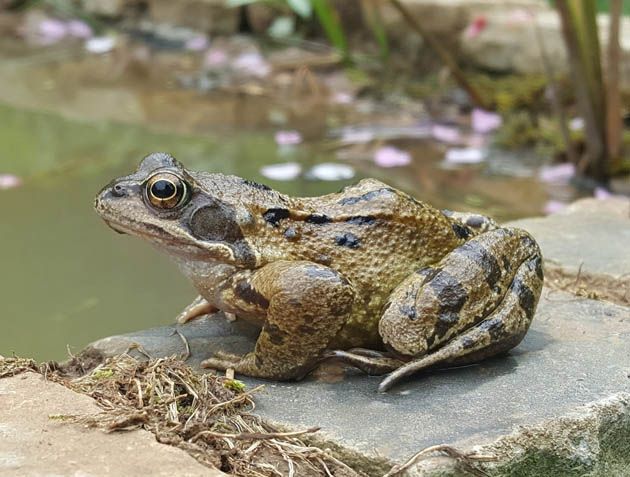
Step 5: Encouraging wildlife
Aquatic plants help to keep ponds healthy and provide havens for wildlife to breed and shelter. Try not to get mud in your pond, as if you start with a pond that looks like a mud bath, then it is likely to remain polluted.
Finally, just watch and wait! It’s surprising how quickly wildlife can find a new pond and begin setting up home. Don’t forget to supervise small children around ponds, or alternatively you can buy a mesh safety cover.
Simple steps to creating your mini pond
Even small water sources can be beneficial for wildlife, so consider a mini pond if you don’t have a lot of outdoor space.
Equipment needed:
-
A large, water-tight container
-
Sand or washed gravel
-
Source of rainwater (such as a water butt)
-
Aquatic plants
-
Pebbles/stones
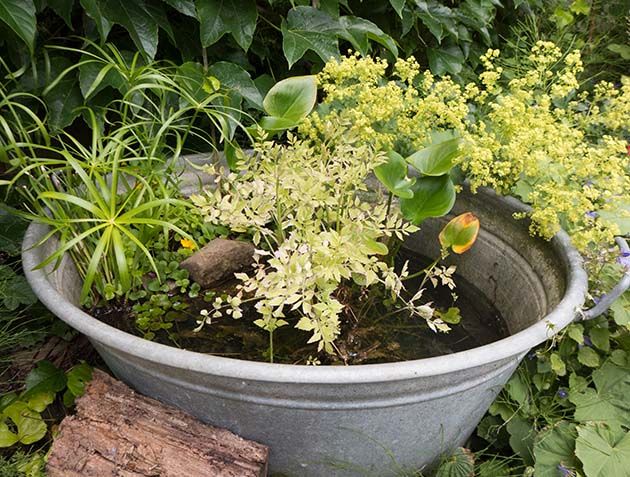
Step 1: Location
Old kitchen sinks, tin baths and large plastic bowls make perfect mini pond containers. An ideal site would be in a fairly sunny area of your Naturespace and it shouldn’t be near trees, as this will cause issues with leaf fall in autumn.
Make sure that your container is clean and that any gaps are sealed, then put it into a level position as it will be much more awkward to move when full of water.

Step 2: Preparing your pond
By using stones, logs or other items, you can create ledges for plants and ‘steps’ for wildlife access - this is essential to ensure that the pond is not a trap for animals.
Adding rocks will provide hiding and resting places for a variety of species. Plus, if you want to make your mini pond look more natural, then you can add sand or clean gravel to the bottom of the container.

Step 3: Just add water
Now you are ready to fill your mini pond! Tap water contains a large amount of nutrients that can be harmful to wildlife and result in the presence of algae, so it is better to avoid this and use rainwater to fill up your mini pond – either through direct rain or a water butt.

Step 4: Encouraging wildlife
Aquatic plants help to keep ponds healthy and provide havens for wildlife to breed and shelter. Finally, just watch and wait! It’s surprising how quickly wildlife can find a new pond and begin setting up home.
Don’t forget to supervise young children around ponds, or alternatively you can buy a mesh safety cover.
Attracting wildlife to your pond
Wildlife will come to your pond naturally. Depending on the time of year, aquatic invertebrates will often appear within the first few weeks and amphibians within the first year. Plants will establish in time.
There are lots of options as to what plants you may want to add to your pond in the spring or early summer. A mixture of native emergent, submerged and floating plants are best for wildlife.
For more information, check out these useful guides:
-
Managing invasive plant species - ‘Be Plant Wise’ campaign
- Creating ponds - Freshwater Habitats Trust Creating Ponds guide or the Wildlife Trusts guide
Check out our list of suggested plants:
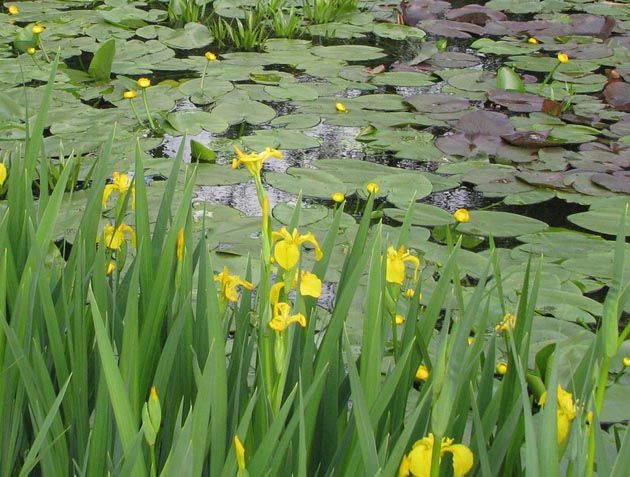
Marginal plants
Growing at the pond edge, these plants encourage invertebrates and provide shelter for amphibians.
Suggestions:
Lesser spearwort, water mint, brooklime, purple loosestrife, marsh marigold, water forget-me-not and sedges. In larger ponds, yellow flag iris is popular, but be aware that it can spread easily so will require controlling.
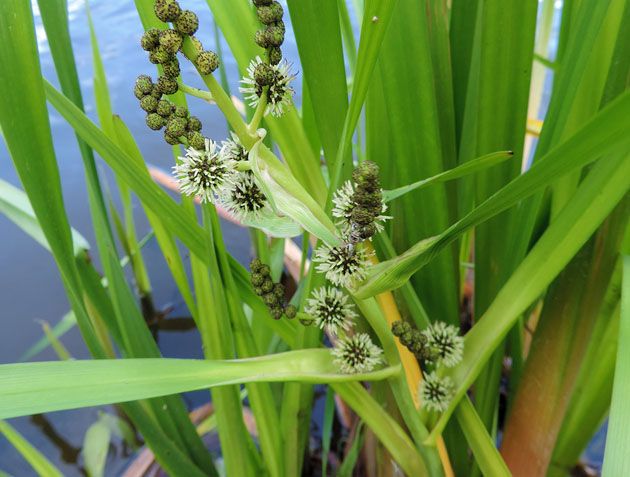
Emergent Plants
In shallow areas, these plants will be used by dragonflies and damselflies to lay their eggs on. Emergent plants send their leaves and flower stems up above the water’s surface.
Suggestions:
Bog bean, flowering rush, branched bur-reed and soft rush.
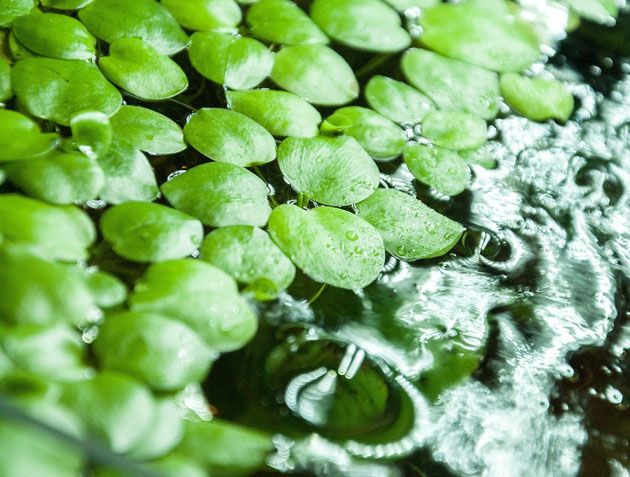
Floating-leaved plants
These plants help oxygenate the water and provide a place for pond snails, dragonflies and newts to lay eggs.
Suggestions:
Frogbit, broad-leaved pondweed, amphibious bistort, fringed water lily, white water lily.
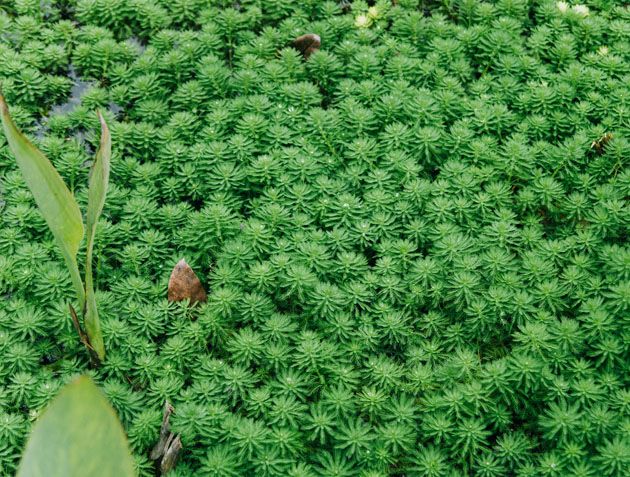
Submerged plants
Submerged plants float in deep water and provide protective cover for many pond creatures.
Suggestions:
Water-starwort, spiked water milfoil and water crowfoot.
Maintaining your pond
- Water level - the water level of the pond should be checked, especially during prolonged dry periods. Water levels will fluctuate naturally, but the pond can be topped up if necessary from a water butt.
- Weeds - excess growth of surface weeds can prevent sunlight filtering to the bottom of the water and inhibit plant growth, leading to oxygen depletion. When removing any vegetation, leave it temporarily at the edge of the pond to allow any wildlife that may be on the vegetation to return to the water.
- Leaf fall - in autumn, remove excess leaves to prevent them rotting and acidifying the pond. Place any leaves in a pile temporarily at the edge of the water to allow any wildlife that may be on the leaves to return to the water. You can use leaves to create a leaf pile or to add to a compost heap elsewhere in your Naturespace.
- Ice - during winter there is a risk that the pond might freeze over, so add a floating object such as tennis ball on the surface. This will allow the water to move and at least part of the pond will remain ice free.
